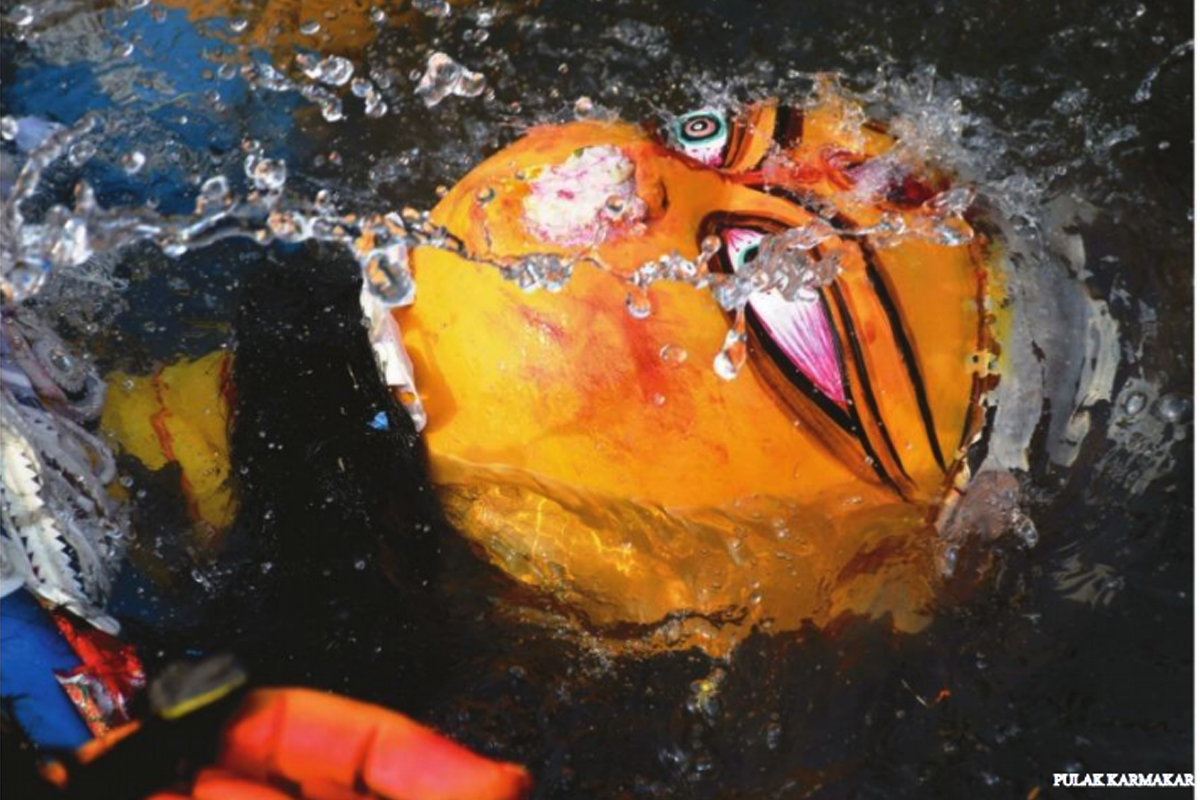UP govt to conduct grand roadshows in India and abroad for Maha Kumbh
Apart from this, approval has been granted for the purchase of 220 vehicles for the event.
We should implement awareness programmes among potters, sculptors, artists and idol makers about eco-friendly idols which are made from clay and soil. This would be a laudable approach to conserve the environment and promote traditional customs and art forms.

Photo: SNS
India has a legacy of culture embedded in the religious inclinations of her people. It is one of the most religiously and ethnically diverse nations of the world, a country where festivals and festivities are espoused from a wide gamut of culturally varied rituals for different communities. Durga puja, Ganesh puja, Diwali, Holi, etc are auspicious occasions comprising immense joy, happiness and celebrations across the country. These puja celebrations are accomplished with idols of respective gods and goddesses. Needless to say, these idols after the celebration, are immersed in various ponds, lakes and other water bodies resulting in significant ecological imbalance. The different sources of drinking water get contaminated and marine life is also threatened due to the use of various toxic and synthetic materials in these idols.
The synthetic colours used to paint the idols release harmful substances like lead, mercury, arsenic and cadmium. These have serious detrimental effects on the environment. The problem becomes more acute when these enhanced toxins from anthropogenic substances exceed the decomposition, dispersal or recycling capabilities and not only alter the natural fresh water but also have longterm detrimental effects.
The brewing environmental crisis is mainly due to the non-biodegradable materials that are used for making such Idols: Plaster of Paris, polythene bags, and harmful paints on the idols to mention a few, whereas surplus bamboo sticks, plastic flowers, clothes, incense, camphor and other materials are dumped into the rivers, which further pollute the water bodies. When an idol made of plaster of Paris is immersed in water, it changes to gypsum, sulphur, phosphorous and magnesium, which further breaks down while adding to the hardness of water and deteriorating its life bearing capacity and quality. Thiscuts down the oxygen supply for aquatic animals and fish, along with rendering the water unfit for human consumption.
Advertisement
We should implement awareness programmes among potters, sculptors, artists and idol makers about eco-friendly idols which are made from clay and soil. This would be a laudable approach to conserve the environment and promote traditional customs and art forms. The local municipal bodies and police can play an active role in monitoring the fact as to whether environment friendly idols are being made for the different festivals.
Of course the religious sentiments of the people cannot be shrugged off completely, a total ban on all these rituals is the answer. A lacuna would be to put in place laws to make it compulsory to make idols out of “eco friendly” materials such as non-baked, quick dissolving clay and use of natural products. The idol makers can be educated and made aware of these laws so that they do not violate them, fearing penalty. Rules and regulations should be imposed on festive activities by enforcing certain regulations during festivals. An apt example would be the ‘National Green Tribunal’s attempt to appoint the Yamuna Pollution Monitoring Committee to stop the entry of even smaller idols into Delhi from neighbouring states if they failed to comply with the Central Pollution Control Board norms. The High Court bench of Justice Ashok Bhushan and Justice Arun Tandon ordered a blanket ban on immersion of idols in the rivers. We must keep in mind that our festivals usher new vigour in our lives but their repercussions should not hamper the environment.
The author is Assistant Professor in Law, Indian Institute of Legal Studies, Siliguri.
Advertisement